|
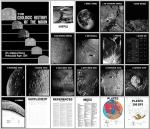 A Classic Returns!
A Classic Returns!
16.06.2004 | Lunnoe foto dnya
During the 20th century there were only two genuine classics of lunar science: Ralph Baldwin's 1949 Face of the Moon that demonstrated that lunar craters were of impact origin and the mare were volcanic lava flows, and Don Wilhelm's 1987 monumental US Geologic Survey Professional Paper 1348: The Geologic History of the Moon.
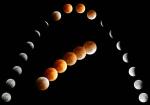 Magnificent Greek Eclipse!
Magnificent Greek Eclipse!
15.06.2004 | Lunnoe foto dnya
Across many parts of Europe clouds and rain blocked the lunar eclipse last evening. But in Athens, Greece, the clouds cleared 45 minutes before first contact and Anthony Ayiomamitis clicked away every five minutes, documenting the changing hue of the Moon as it orbited through Earth's shadow.
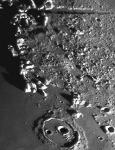 Cassini North
Cassini North
14.06.2004 | Lunnoe foto dnya
Cassini is an unusual looking crater. I think its because it is surrounded by Imbrium lavas so there is an abrupt boundary with its near rim deposits, and because it is filled with lava nearly to its rim. Cassini is a more extreme version of Archimedes.
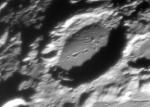 Mercy, Mersenius!
Mercy, Mersenius!
13.06.2004 | Lunnoe foto dnya
Mersenius is in the second rank of lunar craters. Not a must-see like Copernicus, Plato or Gassendi, but a good crater with more interesting features than are obvious. Mersenius is 84 km wide and about 2.3 km deep.
 Magnificent Moon!
Magnificent Moon!
12.06.2004 | Lunnoe foto dnya
Its impossible to take a single image of the Moon that shows topography across the entire Earth-facing side. Pablo Lonnie Pacheco of Monterrey, Mexico has responded to this impossibility with the most spectacular piece of image processing I have ever seen.
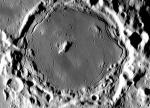 Awesome Pitatus
Awesome Pitatus
11.06.2004 | Lunnoe foto dnya
Pitatus is one of the under-appreciated gems of the Moon. With a diameter of 97 km it is about the same width as Plato (101 km), but has a much more interesting interior. Presumably Pitatus was a Copernicus style crater when formed, with magnificent concentric wall terraces and a large central peak.
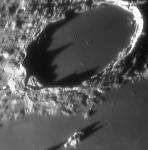 Peaks of Plato
Peaks of Plato
10.06.2004 | Lunnoe foto dnya
The Moon always repays observation. For sociological reasons (sleep and jobs), Plato is commonly studied before midnight, and so the sunrise view with shadows cast by peaks on the eastern ramparts is most familiar.
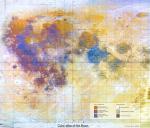 Color Moon Map
Color Moon Map
9.06.2004 | Lunnoe foto dnya
The Jan 28 LPOD astonished many observers with its detailed color rendition of the Full Moon. Now that imager, Filipe Alves, has used advanced computer manipulation to create a Mercator-like projection color image of the Moon - the first I know of. This is a level of sophistication that is new to amateur Moon mapping.
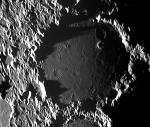 Ptolemaic Sunset
Ptolemaic Sunset
8.06.2004 | Lunnoe foto dnya
Ptolemy, the Greek astronomer, dominated medieval science, and his crater dominates the central region of the Earth-facing hemisphere of the Moon. Ptolemaeus, the Latinized version of the Greek name, is 153 km wide and 2.6 km deep. The rim is battered and a piece is missing on the west side.
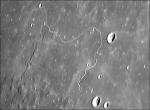 Marvelous Marius Rille
Marvelous Marius Rille
7.06.2004 | Lunnoe foto dnya
Sinuous rilles have led some lunar scientists astray. The curving outlines led to proposals that such rilles were meandering water streams, although by shape alone a giant worm might have been equally defensible! But the Moon's lack of water and life eliminate those origins.

